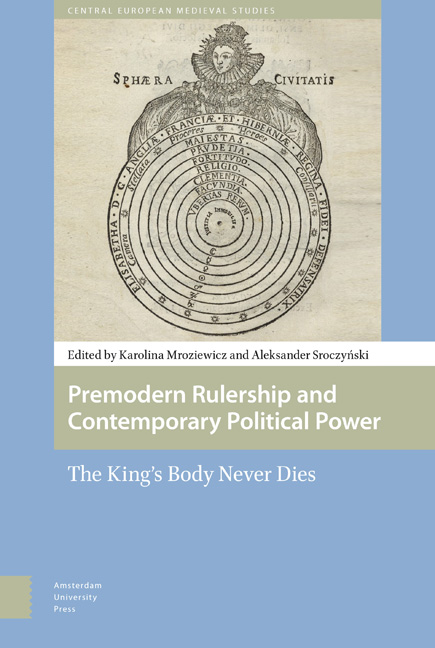The Queen’s Two Faces: The Portraiture of Elizabeth I of England
Published online by Cambridge University Press: 24 December 2020
Summary
Throughout history, the idea of the king having two bodies has been used as a tool to strengthen royal authority. When crowned and anointed with sacred oils, the king was no longer just a mortal ruler, but also the figurative ‘head’ of the mystical body of the commonwealth (and in some cases the church). By granting a sovereign the status of a supernatural being, the body politic effectively allowed a king to transcend his human limitations and frailties. However, one should not believe that the king's two bodies complemented one another harmoniously, creating a firm and stable unity. In fact, their mutual relationship tended to be highly problematic: the political body cannot be separated from the person of the king, yet it is not synonymous with him.
The aim of the present paper is to offer a practical analysis of how the theory of the king's two bodies functioned during the Elizabethan era and, specifically, how it may have influenced artistic practices of the time. The paper will examine how the complexities of this concept was reflected in portraits of Queen Elizabeth I: by using royal portraits from each decade of her reign as examples, we will demonstrate how the naturalistic portraits from the first years of her reign were eventually replaced by her political public image, that of the ever-beautiful, semi-divine Virgin Queen.
Self-Presentation
From the beginning of her reign, Elizabeth – a young woman, and daughter of Anne Boleyn – faced the problem of legitimacy. In order to present herself as the heiress of the sacred English royal tradition, she utilised the legal concept of the king's two bodies as a language to express her royal claim, declaring in her accession speech:
As I am but one bodye naturallye Considered though by His permission a bodye politique to governe; so I shall desyre yow all my Lordes […] to bee assistant to me, that I with my Rulinge and yow with your service may make a good accoumpt to Almighty God.
Elizabeth's authority was supported by creating a sense of continuity with the English monarchy. If the king and his successor were the same person according to the law, then the qualities of the body natural, such as gender, were irrelevant.
- Type
- Chapter
- Information
- Premodern Rulership and Contemporary Political PowerThe King's Body Never Dies, pp. 217 - 246Publisher: Amsterdam University PressPrint publication year: 2017
- 1
- Cited by



